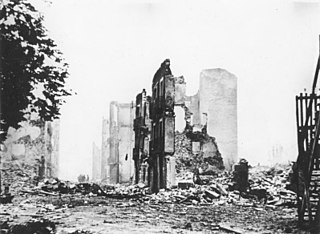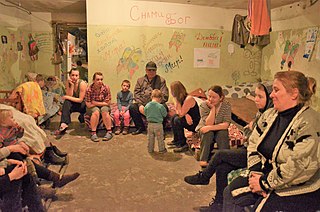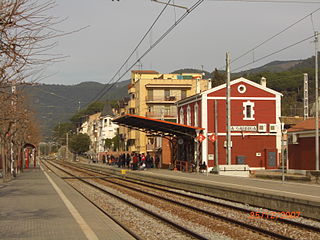History
On the occasion of the Spanish Civil War, were built more than 25 shelters throughout the city of Alcoy to protect them from bombing raids carried out by aircraft Savoia SM 79 from the italian Legionary Air Force, that bombarded Alcoy on several occasions from September 20th 1938 until January 11th, 1939.
The underground shelter has a capacity of 1,166 people and more than 100 meters in length. It is composed of eight galleries, where the population was communicated by two aisles. Its surface area is 292 m2. It also has four toilets or latrines, two washbasins and a first aid room.
The access to the shelter is through a long corridor where is possible to contemplate the original label "is dangerous to stay here" due to the danger to be hit by a bomb shock wave.
The shelter has been musealized, dedicating each gallery to a specific topic. The museum recreates data and aerial photographs from attacks by the italian bombers Savoia 79, who acted on Alcoy. The exhibition has an interactive screen with military objects and a video projection with testimonies of people who lived through the bombing of the city.

Civil defense or civil protection is an effort to protect the citizens of a state from man-made and natural disasters. It uses the principles of emergency operations: prevention, mitigation, preparation, response, or emergency evacuation and recovery. Programs of this sort were initially discussed at least as early as the 1920s and were implemented in some countries during the 1930s as the threat of war and aerial bombardment grew. Civil-defense structures became widespread after authorities recognised the threats posed by nuclear weapons.

The Blitz was a German bombing campaign against the United Kingdom in 1940 and 1941, during the Second World War. The term was first used by the British press and originated from the term Blitzkrieg, the German word for 'lightning war'.

Air Raid Precautions (ARP) refers to a number of organisations and guidelines in the United Kingdom dedicated to the protection of civilians from the danger of air raids. Government consideration for air raid precautions increased in the 1920s and 30s, with the Raid Wardens' Service set up in 1937 to report on bombing incidents. Every local council was responsible for organising ARP wardens, messengers, ambulance drivers, rescue parties, and liaison with police and fire brigades.
The Italian Royal Air Force was the name of the air force of the Kingdom of Italy. It was established as a service independent of the Royal Italian Army from 1923 until 1946. In 1946, the monarchy was abolished and the Kingdom of Italy became the Italian Republic, whereupon the name of the air force changed to Aeronautica Militare.

The aerial bombing of cities is an optional element of strategic bombing, which became widespread in warfare during World War I. The bombing of cities grew to a vast scale in World War II, and is still practiced today. The development of aerial bombardment marked an increased capacity of armed forces to deliver ordnance from the air against combatants, military bases, and factories, with a greatly reduced risk to its ground forces. The killing of civilians and non-combatants in bombed cities has variously been a deliberate goal of strategic bombing, or unavoidable collateral damage resulting from intent and technology. A number of multilateral efforts have been made to restrict the use of aerial bombardment so as to protect non-combatants.

Air raid shelters are structures for the protection of non-combatants as well as combatants against enemy attacks from the air. They are similar to bunkers in many regards, although they are not designed to defend against ground attack.

The Savoia-Marchetti SM.79 Sparviero was a three-engined Italian medium bomber developed and manufactured by aviation company Savoia-Marchetti. It may be the best-known Italian aeroplane of the Second World War. The SM.79 was easily recognizable due to its fuselage's distinctive dorsal "hump", and was reportedly well liked by its crews, who nicknamed it il gobbo maledetto.

The bombing of Guernica was an aerial bombing of the Basque town of Guernica during the Spanish Civil War. It was carried out at the behest of Francisco Franco's rebel Nationalist faction by its allies, the Nazi German Luftwaffe's Condor Legion and the Fascist Italian Aviazione Legionaria, under the code name "Operation Rügen". The town was being used as a communications centre by Republican forces just behind the front line, and the raid was intended to destroy bridges and roads. The operation opened the way to Franco's capture of Bilbao and his victory in northern Spain.

Berlin, then the capital of Nazi Germany, was subject to 363 air raids during the Second World War. It was bombed by the RAF Bomber Command between 1940 and 1945, by the USAAF Eighth Air Force between 1943 and 1945, and the French Air Force between 1944 and 1945, as part of the Allied campaign of strategic bombing of Germany. It was also attacked by aircraft of the Red Air Force, in 1941 and particularly in 1945 as Soviet forces closed on the city. British bombers dropped 45,517 tons of bombs, while American aircraft dropped 22,090.3 tons. As the bombings continued, more and more people fled the city. By May 1945, 1.7 million people had fled.

The Savoia-Marchetti SM.81 Pipistrello was the first three-engine bomber/transport aircraft serving in the Italian Regia Aeronautica. When it appeared in 1935, it represented a real step ahead in Italian military aviation: it was fast, well armed and had a long range. It proved effective during the war with Ethiopia and the Spanish Civil War. Despite being too slow to remain competitive as a bomber in the later years of World War II, it was one of the most flexible, reliable and important aircraft of the Regia Aeronautica from 1935 to 1944, and adapted to second-line duties in a wide range of tasks.

During World War II the Italian city of Naples suffered approximately 200 air raids by the Allies from 1940 to 1944; only Milan was attacked more frequently. Almost all of the attacks — a total of 181 — were launched in the first nine months of 1943 before the Four days of Naples and the Allied occupation of the city at the beginning of October. Estimates of civilian casualties vary between 20,000 and 25,000 killed.

The Legionary Air Force was an expeditionary corps from the Italian Royal Air Force that was set up in 1936. It was sent to provide logistical and tactical support to the Nationalist faction after the Spanish coup of July 1936, which marked the onset of the Spanish Civil War.

The Italian Corpo Aeronautico Militare was formed as part of the Regio Esercito on 7 January 1915, incorporating the Aviators Flights Battalion (airplanes), the Specialists Battalion (airships) and the Ballonists Battalion. Prior to World War I, Italy had pioneered military aviation in the Italo-Turkish War during 1911–1912. Its army also contained one of the world's foremost theorists about the future of military aviation, Giulio Douhet; Douhet also had a practical side, as he was largely responsible for the development of Italy's Caproni bombers starting in 1913. Italy also had the advantage of a delayed entry into World War I, not starting the fight until 24 May 1915, but took no advantage of it so far as aviation was concerned.

The Swansea Blitz was the heavy and sustained bombing of Swansea by the German Luftwaffe from 19 to 21 February 1941. A total of 230 people were killed and 397 were injured. Swansea was selected by the Germans as a legitimate strategic target due to its importance as a port and docks and the oil refinery just beyond, and its destruction was key to Nazi German war efforts as part of their strategic bombing campaign aimed at crippling coal export and demoralizing civilians and emergency services.

Alcoy is an industrial and university city, region and municipality located in the Valencian Community, Spain. The Serpis river crosses the municipal boundary of Alcoy. The local authority reported a population of 61,135 residents in 2018.
The bombing of Foggia took place on several occasions in 1943, by Allied aircraft. The bombing caused 20,298 civilian victims during nine air raids.

The Bombing of Barcelona was a series of airstrikes led by Fascist Italy and Nazi Germany supporting the Franco-led Nationalist rebel army, which took place from 16 to 18 March 1938, during the Spanish Civil War. Up to 1,300 people were killed and at least 2,000 were wounded. It is considered the first aerial carpet bombing in history.

The Bombing of La Garriga where a series of Nationalist air raids which took place at La Garriga, Barcelona province in Catalonia between 28 and 29 January 1939 during the Spanish Civil War. At least 13 civilians were killed in the bombings.

The bombing of Ancona was a series of attacks by the United States Air Force on the city of Ancona in the Marche, Italy during World War II. The raids caused heavy civilian casualties and destroyed or damaged nearly 70 % of the city.
Attilio Biseo was an Italian aviator, powerboat racer, Air Force general during World War II, and the personal pilot of Benito Mussolini during the 1930s.

















